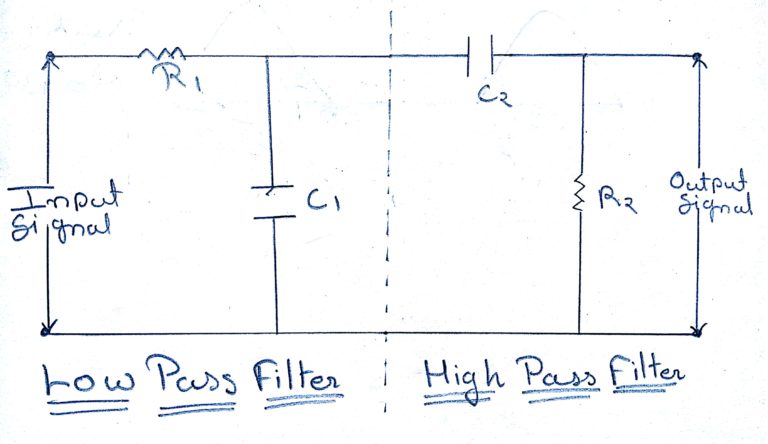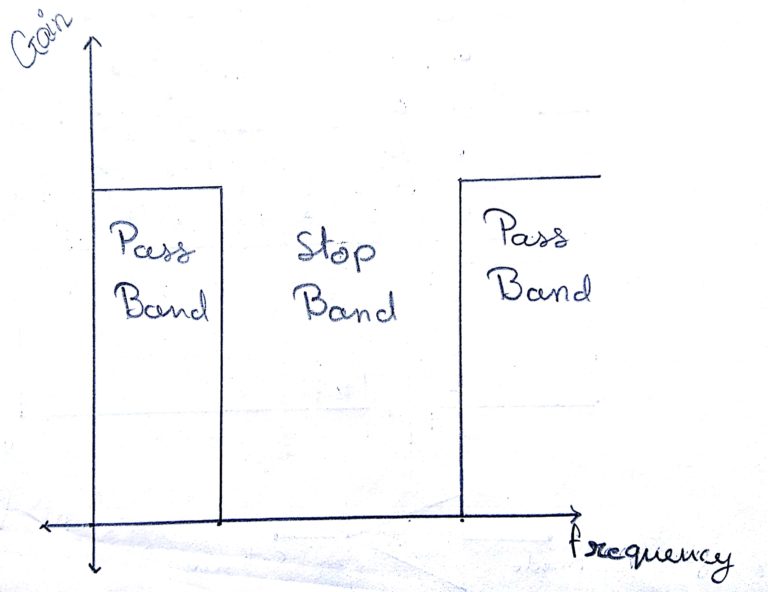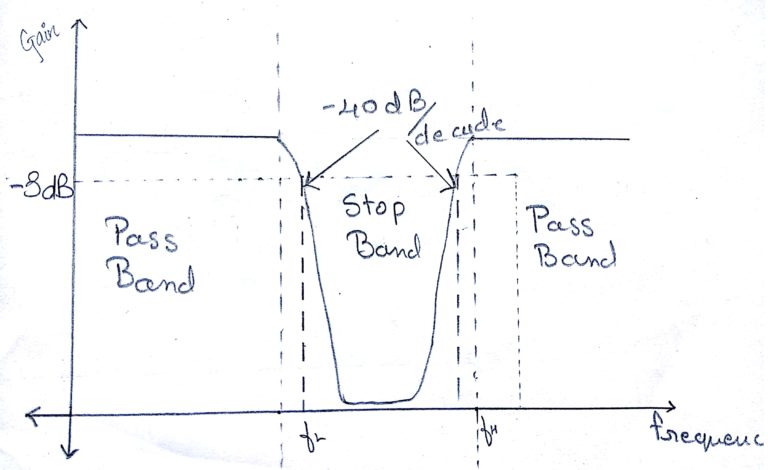Passive Band Stop Filter
In High Pass Filter we can reject on the frequencies below the cut off frequency and in Low pass filter we reject only the signals of frequencies above the cut off frequency. But if we want to reject certain range of frequency only, while the other frequencies should be received at the output, at that time there is requirement of a filter that rejects only the band of frequency while the frequency lower than the range of frequency required and the frequencies above the range are allowed to pass through the circuit.
A Band Stop Filters passes signals within a certain band of frequencies without distorting the input signal or introducing extra noise.
This band of frequencies can be any width and is commonly known as the filters Bandwidth.
Bandwidth is commonly defined as the frequency range that exists between two specified frequency cut-off points ( ƒc ),

So it can be said that the bandwidth is the difference between the higher cut-off frequency ( ƒcHIGHER ) and the lower cut-off frequency ( ƒcLOWER ) points. In other words, BW = ƒL – ƒH. Clearly for a stop band filter to function correctly,
The “ideal” Band Stop Filter can also be used to filter out certain frequencies that lie within a particular band of frequencies, for example, noise cancellation. Band Stop filters are known generally as second-order filters, (two-pole) because they have “two” reactive component, the capacitors, within their circuit design. One capacitor in the low pass circuit and another capacitor in the high pass circuit.

The figure above shows the ideal characteristics of Band Stop Filter.

The figure above shows the practical characteristics of Band Stop Filter.